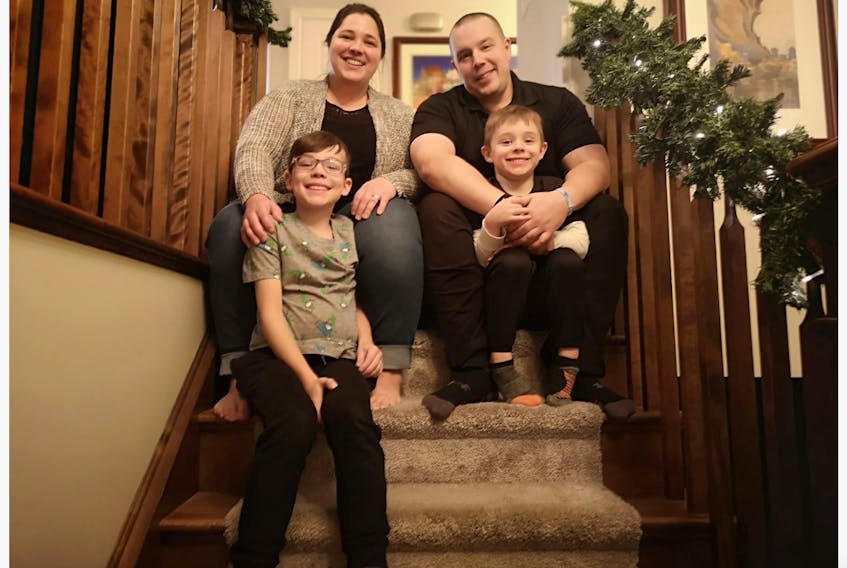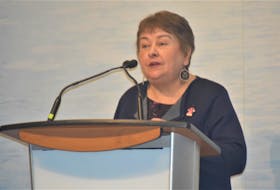ST. JOHN'S, N.L. — After John and Gillian Bennett’s son, John Jr., was born nine years ago, he wasn’t gaining any weight.
“It was essentially a guessing game as to what may have been wrong,” John Sr. said.
For two and a half months they couldn’t figure it out.
“They did a sweat test to rule cystic fibrosis out,” he said.
That test was done in the morning, the results came back in the afternoon — positive — and that night they began placing a medication, called Cotazym, in apple sauce to feed him.
“That night he started gaining weight and he didn’t stop,” John Sr. said. “For the first three or four years we bought a lot of apple sauce.”
In 2015, cystic fibrosis was added to the screening of rare diseases in newborns in Newfoundland and Labrador, but there is still no known cure.
Cystic fibrosis (CF), a fatal genetic disorder, occurs when both parents of a child pass on defective copies of the gene responsible for CF, according to Cystic Fibrosis Canada (CFC). About one in 25 Canadians carry this gene but do not have CF or exhibit any of its symptoms.
John Wallenburg, chief scientific officer with CFC, says progress has been made in the past few decades, mostly through treating the symptoms.
“People with CF, they have this thick, sticky mucus that plugs up the pancreas, the smaller airways. It interferes with the intestine and the absorption of nutrients,” Wallenburg said.
“That thick, sticky mucus serves as a medium for bacteria to land on and grow.”
For John Jr., a thick layer of mucus had covered his pancreas when he was a baby. Because of this, his body couldn’t break down food.
To counteract this, he has to take between 25 and 30 Cotazym capsules a day, and do preventative physiotherapy, inhale therapy and a host of other things as well, John Sr. says.
“We’ve got enzymes at our friend’s houses, (our) family’s, you name it,” he says. “People go, ‘Geez, how do you manage that?’ We just manage it because we’re used to it.”
For people who aren’t familiar with CF, John Sr. says it is commonly associated with the lungs.
“A huge part of it is (the lungs), but it’s also other organs and other complications.”
Recently, John Jr. was told he had the early signs of cirrhosis of the liver.
Gillian says the disease is unpredictable.
“(That is) probably the hardest thing,” she says. “He could be perfectly fine one day and he could wake up with a cough tomorrow morning.”
Despite this, John Jr. is a typical, fun-loving nine-year-old boy, who loves playing hockey and watching his favourite team, the Montreal Canadiens, with his dad.
And despite their situation, they have hope.
One such hope comes in the form of a new drug called Trikafta, a drug Wallenburg says will have a huge impact.
“After the gene (associated with CF) was (identified) in 1989, we started to understand better about how it worked,” he says.
That gene produces a protein that sits in the wall of cells and opens and closes like a window, he says, allowing chloride ions to travel out of the cell.
As the chloride ions travel out of the cell, they take water with them. When that "window" to the cell doesn’t work properly, as is the case with CF, the lack of water causes a thick, sticky mucus, which leads to many issues.
“These drugs, what they do is they actually go in and they fix the problem with the broken protein,” Wallenburg says.
“This drug is so effective … it’s good for 90 per cent of the population.”
Clinical trials have been done on adults in several countries, including Canada, Australia and the United States. Clinical trials for younger age groups are currently ongoing.
The Food and Drug Administration (FDA) in the United States approved the drug for patients 12 and older at the end of October.
In an emailed statement to The Telegram, Health Canada says while the company that makes the drug, Vertex Pharma, has been in contact with them, it has not yet filed a drug submission that would start the process of scientific review. Any company wishing to market a drug in Canada must go through this process.
Normally this process takes about three to five years, Wallenburg says.
“We’re hoping that Canada will expedite the approval,” he says. “In the United States, the FDA used four separate mechanisms to prioritize and expedite the review of Trikafta, it was that important a drug.”
CFC is running its fourth annual year-end wish campaign, which raises funds the organization uses for research, care and advocacy.
John Sr. says their family’s wish this year is for a longer and healthier life for their son.
“You want them to graduate and get married and do all those other things,” he says.
“What we hear from the research and those drugs coming down the pipeline, it gives you tonnes of hope. It’s just baby steps to get there.”
Twitter: @andrewLwaterman









